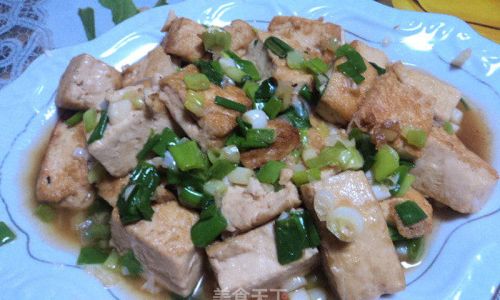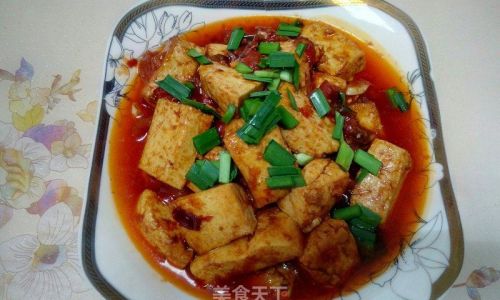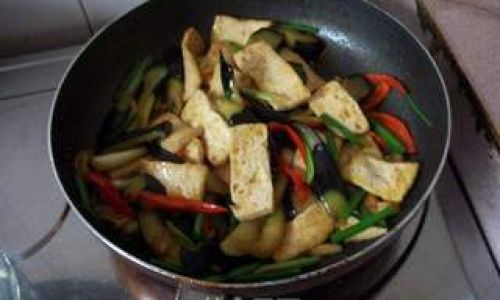Table of content
Stir-fried tofu, a cornerstone of Asian cuisine, has transcended cultural boundaries to become a global favorite. Revered for its versatility, nutritional value, and ability to absorb flavors, tofu—a soybean curd—serves as a blank canvas for culinary creativity. Whether you’re a seasoned home cook or a novice in the kitchen, mastering the art of stir-fried tofu opens doors to endless meal possibilities. This guide will walk you through every step, from selecting the right tofu to executing flawless cooking techniques, ensuring your dish is both delicious and visually appealing.
Understanding Tofu: Types and Textures
Before diving into the recipe, it’s essential to grasp the nuances of tofu. Available in various textures—silken, soft, firm, and extra-firm—each type serves a distinct purpose. For stir-frying, firm or extra-firm tofu is non-negotiable. These varieties hold their shape during high-heat cooking, preventing crumbling and ensuring a satisfyingly chewy texture. Silken tofu, while ideal for soups or desserts, lacks the structural integrity needed for stir-fries.
When shopping, opt for tofu packaged in water. Drain it thoroughly before use, and if time permits, press it to remove excess moisture—a step that elevates the final dish by concentrating flavor and preventing sogginess.

Essential Ingredients and Tools
A great stir-fry hinges on balance: fresh ingredients, aromatic seasonings, and precise heat control. Below is a breakdown of the components you’ll need:
For the Tofu and Vegetables
- 1 block (14–16 oz) firm or extra-firm tofu: The star of the dish.
- 2 tbsp vegetable oil (or sesame oil for added nuttiness): For searing the tofu.
- 1 medium onion, thinly sliced: Adds sweetness and crunch.
- 1 red bell pepper, julienned: Provides vibrant color and mild sweetness.
- 1 cup broccoli florets: For a hearty texture and nutrient boost.
- 1 cup sliced mushrooms (shitake or cremini): Earthy depth of flavor.
- 2 garlic cloves, minced: Aromatic base.
- 1-inch ginger, grated: Bright, peppery notes.
- 4–5 green onions, chopped: Garnish for freshness.
For the Sauce
The sauce is the soul of the stir-fry, tying the ingredients together. A classic blend includes:
- 3 tbsp soy sauce (or tamari for gluten-free): Umami richness.
- 1 tbsp oyster sauce (vegetarian oyster sauce available): Depth and sweetness.
- 1 tbsp rice vinegar: Acidity to balance flavors.
- 1 tbsp honey or maple syrup: Subtle sweetness (adjust to taste).
- 1 tsp cornstarch: Thickens the sauce.
- ¼ cup vegetable broth or water: To dilute the sauce.
Optional Additions
- Chili flakes or sriracha: For heat.
- Toasted sesame seeds: Crunchy garnish.
- Fresh cilantro or basil: Herbaceous finish.
Tools
- Wok or large skillet: Essential for high-heat cooking.
- Tofu press (or heavy books/plates): To remove moisture.
- Sharp knife and cutting board: For precise chopping.
- Mixing bowls: To marinate tofu and prepare sauce.
Step-by-Step Preparation
Pressing the Tofu
Patience here is key. Remove the tofu from its packaging and drain the water. Wrap it in paper towels or a clean kitchen cloth, then place it on a plate. Top with another plate and a heavy object (like a can of beans or a skillet). Let it press for 20–30 minutes. This step expels excess liquid, ensuring the tofu sears beautifully instead of steaming.
Cutting and Marinating
Once pressed, unwrap the tofu and cut it into 1-inch cubes or ½-inch slices. For extra flavor, marinate the tofu in a mixture of 1 tbsp soy sauce, 1 tsp sesame oil, and a pinch of black pepper for 15 minutes. While optional, marinating infuses deeper umami notes.
Prepping Vegetables and Sauce
Uniformity in vegetable cutting ensures even cooking. Slice the onion, bell pepper, and mushrooms into similar sizes. Mince the garlic and ginger finely—they’ll bloom quickly in hot oil, releasing their fragrance.

In a small bowl, whisk together the soy sauce, oyster sauce, rice vinegar, honey, cornstarch, and broth. Set aside; the cornstarch will thicken the sauce as it cooks.
Cooking Technique: The Stir-Fry Method
Stir-frying is a dance of heat, timing, and motion. Follow these steps for perfection:
Searing the Tofu
Heat 1 tbsp oil in a wok over medium-high heat. Once shimmering, add the tofu in a single layer (work in batches if needed). Let it sear undisturbed for 3–4 minutes per side until golden brown. Avoid stirring too soon, or the tofu will stick. Transfer to a plate and set aside.
Stir-Frying Aromatics
Reduce heat to medium. Add the remaining 1 tbsp oil, then toss in the garlic and ginger. Stir constantly for 30 seconds until fragrant but not browned.
Cooking Vegetables
Raise the heat to high. Add the onions and bell peppers, stirring vigorously for 2 minutes. Follow with broccoli and mushrooms, cooking for an additional 3–4 minutes until tender-crisp. Overcooking vegetables results in mushiness, so err on the side of al dente.

Combining Ingredients
Return the tofu to the wok. Pour the sauce over the mixture, tossing gently to coat. Let it simmer for 1–2 minutes until the sauce thickens and clings to the ingredients. Remove from heat immediately to prevent overcooking.
Final Touches
Sprinkle with green onions, sesame seeds, or chili flakes. Serve hot over steamed rice, noodles, or quinoa.
Troubleshooting Common Issues
Even seasoned cooks encounter hiccups. Here’s how to fix them:
- Soggy Tofu: Ensure thorough pressing and avoid overcrowding the pan.
- Bland Flavor: Amplify the sauce with an extra splash of soy sauce or a dash of miso paste.
- Burnt Garlic: Add aromatics after reducing heat slightly.
- Mushy Vegetables: Cook in batches and maintain high heat.
Variations and Customizations
Stir-fried tofu is a chameleon—adapt it to your palate or dietary needs:
- Protein Boost: Add shrimp, chicken, or edamame for non-vegetarian versions.
- Spice It Up: Incorporate gochujang, sambal oelek, or fresh chili peppers.
- Nutty Crunch: Top with crushed peanuts or cashews.
- Sauce Swaps: Experiment with teriyaki, black bean, or sweet chili sauce.
Nutritional Benefits
Tofu is a nutritional powerhouse, offering 10 grams of protein per ½-cup serving, along with iron, calcium, and magnesium. Paired with vegetables, this dish provides a low-calorie, high-fiber meal rich in antioxidants and vitamins.

Cultural Context and Tips
In many Asian cultures, stir-frying is a daily ritual—a testament to efficiency and flavor. To honor this tradition:
- Mise en Place: Prep all ingredients before heating the wok; stir-fries cook rapidly.
- High Heat: A smoking-hot wok sears ingredients, locking in flavor.
- Balance: Aim for a harmony of sweet, salty, sour, and spicy notes.
Conclusion
Stir-fried tofu is more than a meal—it’s a celebration of simplicity and adaptability. With practice, you’ll learn to trust your instincts, adjusting seasonings and textures to suit your taste. Whether you’re meal-prepping for the week or hosting a dinner party, this dish delivers satisfaction every time. So grab your wok, embrace the sizzle, and let the aromatic symphony of stir-fried tofu transform your kitchen into a culinary destination.






0 comments